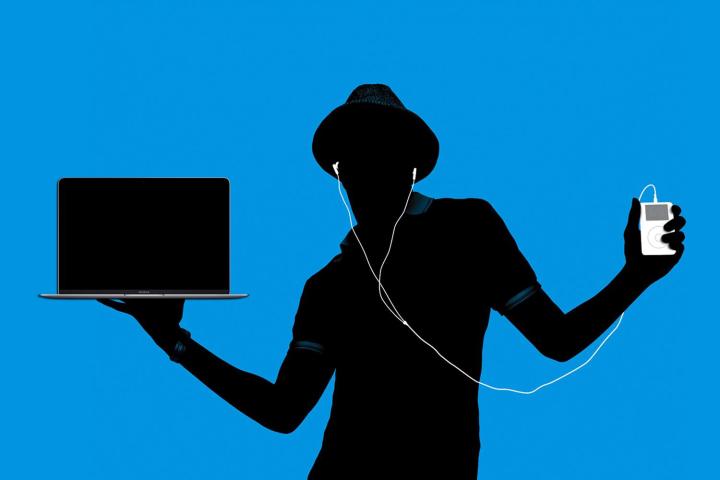
On the surface, the reveal of a newly refreshed version of the MacBook might seem a sign that Apple’s premier brand of laptops is set to continue far into the future. That, in fact, is probably true. Yet it’s also possible the new MacBook represents a change in direction. Looking back to a similar Apple event held in September of 2007, we see a similar scene; a potentially game-changing product stole the headlines, in that case, the iPod Touch, while another device was announced that catered to more traditional consumers: the iPod Classic.
Though it wasn’t fully discontinued until last year, the fate of the last traditional iPod was set in 2007. The iPod Touch was the precursor to the ubiquitous smartphone usage of the present, a necessary stepping stone towards the iPhone, and a canny way of familiarizing pockets of the company’s userbase with touchscreens. Like the Watch, it signaled a major change in the way people use electronics, one that eventually swept away old categories.
A new path
The Spring Forward event contained plenty of hints that the new MacBook is a similar product to the iPod Classic. It’s a product that appeals to a passionate user base that has stagnated. There are forward-thinking features, but it’s a legacy product in essence. It’s refined rather than revolutionary, and its wholly familiar look and feel is evidence that it’s aimed at an audience that already owns an older MacBook model.
There’s been a sense that Apple is in a creative slump, waiting for the next big hit. Now that’s changing.
There’s been a sense that Apple is in a creative slump, waiting for the next big hit. Now, things may be changing. There’s a certain confidence beginning to shine through. Aesthetically, the design of the new MacBook is a sharp deviation from systems before, closer to the look and feel of an iPad than anything we’ve seen from previous Macs. And the decision to go with a single USB-C port for all wired connectivity is incredibly bold.
But it’s perhaps not as bold as Apple would like it to be. As Tim Cook himself noted at today’s event, the laptop market has been changing for some time. He suggested that Apple has reinvented the notebook, building upon the foundations they’d established with the iPhone and the iPad. In truth, though, the MacBook is still undeniably a Mac, and it refines rather than reinvents notebook compute.
Yet Apple wants to do more, which suggests the company is working on some amalgam of a portable device that fixes the tension between tablets and modern laptops. What would that mean? A focus on touch, but without the abandonment of tactile input. The MacBook is a step towards that, but it doesn’t go as far as it could, most likely due to the limits of modern technology.

The compromise between the utility of a keyboard and the portability of a touch-based tablet has to be at the core of any manufacturer’s design for the future, including Apple. If people weren’t quite so attached to the feel of a keystroke, tablets might have snatched away even more of the laptop audience than they have done thus far. Input method will be the defining factor in the next big advance in portable computing, and Apple is probably working on the answer in its labs.
What’s crucial is that Apple is working on the feel of a keyboard. At present, the fruit of that labor is the butterfly mechanism in the new MacBook, which helps the company offer a decent keyboard experience in an incredibly slim system. But that doesn’t mean that the process is complete. Apple is probably looking for solutions that don’t require mechanical components. Haptic feedback seems a possibility, for example; the “Force Touch” feature on the new MacBook and MacBook Pro 13 with Retina is an example of how Apple may get creative with touch in the future to create a better computer interface.
The Next Big Thing?
Apple used the slogan ‘Think Different’ for many years, and while its been dropped for promotional purposes, it still seems to be the company’s ethos. The Apple brand sees no merit in a me-too device. The company still enjoys an ‘outsider’ status that differentiates it from the pack of faceless tech companies. That’s what helped the Mac carve out a niche when Windows was the norm, and it’s the difference-maker Apple will need to gain any sort of foothold in their often-rumored automotive efforts.
Apple is likely researching a new interface that doesn’t require mechanical components.
Few other companies can claim the same rabid fan-base that Apple possesses. There are plenty of consumers out there who would blindly buy whatever Apple releases, for better or worse. A cynic might take that fact as a license for the company to release incremental updates to its most popular devices, but an optimist would argue that it puts them in an enviable position. Apple can release a wholly original device with some confidence, knowing that it won’t bomb completely thanks to their dedicated fans.
That’s why the company can offer a $10,000 smartwatch, and it may well be why they can redefine the portable computer in the future. A device that isn’t quite what we know as a tablet, but isn’t a laptop either. Something that’s as portable as an iPad, but has a compelling haptic solution that makes typing feel as precise as it does on a traditional keyboard. This may sound like wishful thinking, but it’s a logical solution to the gap in the market between tablets and laptops. And it’s actually a step in the direction the new MacBook, with its near-iPad thinness, large touchpad and focus on portability over performance, is already headed.


